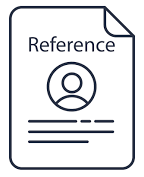Low-cost Waste Management System with Multi-node Application Using Simple LoRa Protocol
Abstract
Indonesia needs to manage its waste issue effectively and efficiently. Most of the time, waste management is traditionally done with a direct transit system of ambiguous intensity. This study aims to design an Internet of Things (IoT)-based trash monitoring system that includes an Arduino Uno microcontroller, an ultrasonic sensor, a DHT22, and GPS. Each sensor functions to capture filling level, humidity, and waste location. Additionally, it employs the LoRa RFM95 module, a long-distance data transmission medium. The LoRa RFM95 has tested its RSSI (Received Signal Strength Indicator), packet loss, and delay parameters with non-line-of-sight (NLOS) propagation to observe the performance of it. This study used a multi-node sensor application to monitor four trash cans in a large-scale suburban area. The prototype is made up of four nodes and one gateway. The Simple Lora Protocol is implemented on the gateway to avoid data collisions during transmission. Then, the gateway forwards sensor data to Firebase. The stored data in the real-time database is then presented in the Trash Monitor application, making it possible to keep track of any changes in sensor data. This prototype can make the waste management system more effective and efficient by monitoring the trash cans condition remotely without having to check directly into the trash bin.
Downloads
References
T. Takaendengan, T. Padmi, E. Sembiring, and E. Damanhuri, “Financing Of Municipal Solid Waste In The City Of Manado.” [Online]. Available: http://www.iaras.org/iaras/journals/ijes.
M. Syamsul, “Faktor-faktor Lingkungan Meningkatkan Insidensi Demam Berdarah di Sulawesi Selatan Environmental Factors Increase Incidence of Dengue Fever in South Sulawesi,” vol. 1, no. 1, pp. 1–7, 2019, doi: 10.36590/jika.
Sakshi Neema and Prof. Kaushal Gor, “Smart Waste Management Using IoT,” Int J Sci Res Sci Eng Technol, pp. 16–21, Nov. 2022, doi: 10.32628/IJSRSET229529.
M. Cerchecci, F. Luti, A. Mecocci, S. Parrino, G. Peruzzi, and A. Pozzebon, “A low power IoT sensor node architecture for waste management within smart cities context,” Sensors (Switzerland), vol. 18, no. 4, Apr. 2018, doi: 10.3390/s18041282.
M. Chavan, V. Swapna, H. Sune, and Prof. Mrs. D. Yewale, “IOT Based Waste Management System,” Int J Res Appl Sci Eng Technol, vol. 10, no. 8, pp. 1202–1204, Aug. 2022, doi: 10.22214/ijraset.2022.46390.
T. Ali, M. Irfan, A. S. Alwadie, and A. Glowacz, “IoT-Based Smart Waste Bin Monitoring and Municipal Solid Waste Management System for Smart Cities,” Arab J Sci Eng, vol. 45, no. 12, pp. 10185–10198, Dec. 2020, doi: 10.1007/s13369-020-04637-w.
M. Saban, O. Aghzout, L. D. Medus, and A. Rosado, “Experimental analysis of IoT networks based on LOra/LoRAWAN under indoor and outdoor environments: Performance and limitations,” in IFAC-PapersOnLine, Elsevier B.V., 2021, pp. 159–164. doi: 10.1016/j.ifacol.2021.10.027.
M. Jouhari, E. M. Amhoud, N. Saeed, and M.-S. Alouini, “A Survey on Scalable LoRaWAN for Massive IoT: Recent Advances, Potentials, and Challenges,” Feb. 2022, [Online]. Available: http://arxiv.org/abs/2202.11082.
F. Adelantado, X. Vilajosana, P. Tuset-Peiro, B. Martinez, J. Melia-Segui, and T. Watteyne, “Understanding the Limits of LoRaWAN,” IEEE Communications Magazine, vol. 55, no. 9, pp. 34–40, 2017, doi: 10.1109/MCOM.2017.1600613.
E. Didik Widianto, A. A. Faizal, D. Eridani, R. Dwi, O. Augustinus, and M. S. Pakpahan, “Simple LoRa Protocol: Protokol Komunikasi LoRa Untuk Sistem Pemantauan Multisensor Simple LoRa Protocol: LoRa Communication Protocol for Multisensor Monitoring Systems,” TELKA, vol. 5, no. 2, pp. 83–92, 2019.
K. G. Panda, D. Agrawal, A. Nshimiyimana, and A. Hossain, “Effects of environment on accuracy of ultrasonic sensor operates in millimeter range,” Perspect Sci (Neth), vol. 8, pp. 574 – 576, Sep. 2016, doi: 10.1016/j.pisc.2016.06.024.
LoRa Alliance, “RP002-1.0.1 LoRaWAN Regional Parameters NOTICE OF USE AND DISCLOSURE 4,” 2020.
Hope Microelectronics Co, “Low Power Long Range Transceiver Module V1.0,” Guangdong, 2006. [Online]. Available: http://www.hoperf.com.
D. Zorbas, P. Maille, B. O’Flynn, and C. Douligeris, Fast and Reliable LoRa-based Data Transmission. IEEE Symposium on Computers and Communications (ISCC), 2019.
Wu-Jeng Li, Chiaming Yen, You-Sheng Lin, Shu-Chu Tung, and ShihMiao Huang, “Just IoT Internet of Things based on the Firebase Real-time Database,” 2018 IEEE International Conference on Smart Manufacturing, Industrial and Logistics Engineering (SMILE), pp. 43–47, 2018.
Devaprakash, Gowtham, Murali, Muralidharan, and V.J.Vijayalakshmi, “Centralized Attendance Monitoring System,” 2020 6th International Conference on Advanced Computing and Communication Systems (ICACCS)., pp. 1288–1291, 2020.
A Yanziah, S Soim, and M M Rose, “Analisis Jarak Jangkauan Lora Dengan Parameter Rssi Dan Packet Loss Pada Area Urban,” Jurnal Teknologi Technoscientia, vol. 13, pp. 59–67, Aug. 2020.
A. S. Ayuningtyas, I. Uke, K. Usman, and I. Alinursafa, “Analisis Perencanaan Jaringan Lora (Long Range) Di Kota Surabaya Lora (Long Range) Network Planning Analysis In Surabaya City.”
Copyright (c) 2023 Jurnal Ecotipe (Electronic, Control, Telecommunication, Information, and Power Engineering)

This work is licensed under a Creative Commons Attribution 4.0 International License.
Copyright in each article is the property of the author.
- The author acknowledges that the Jurnal Ecotipe (Electronic, Control, Telecommunication, Information, and Power Engineering) has the right to publish for the first time with a Creative Commons Attribution 4.0 International License.
- The author can enter the writing separately, regulate the non-exculsive distribution of manuscripts that have been published in this journal into other versions (for example: sent to the author's institution respository, publication into books, etc.), by acknowledging that the manuscript was first published in the Jurnal Ecotipe (Electronic, Control, Telecommunication, Information, and Power Engineering);


























